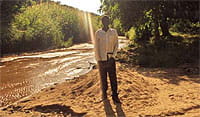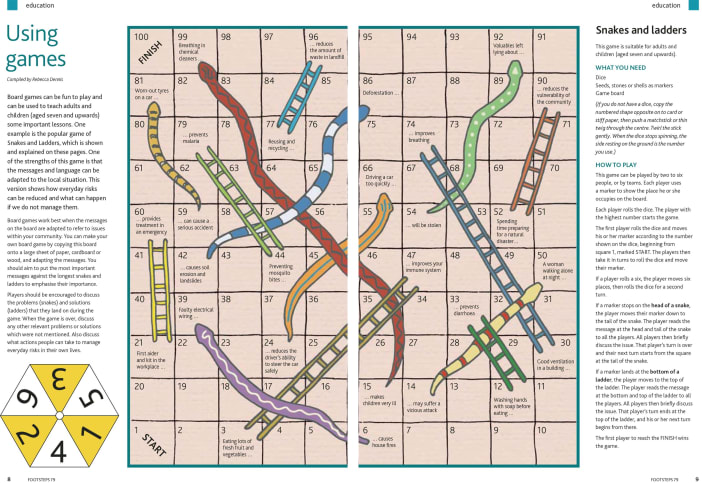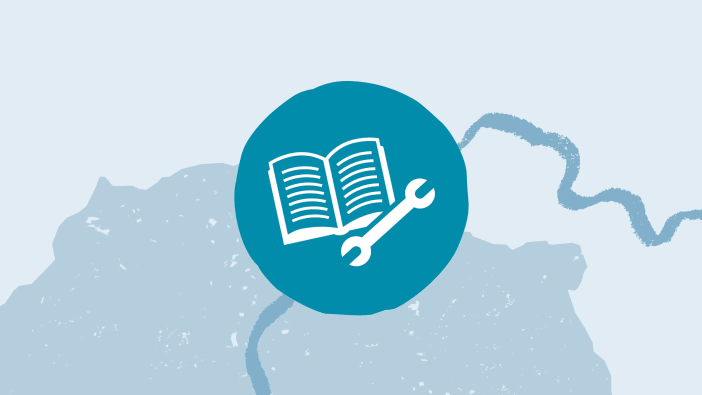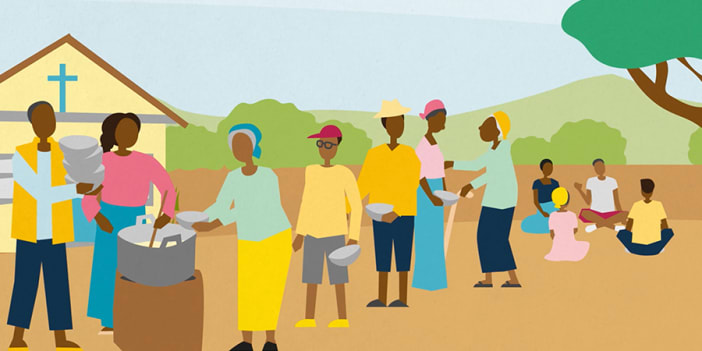by Dingiswayo Jere

The Mwanalundu disaster risk reduction project
Over recent years the Mwanalundu river in southern Malawi has gone through a cycle of flooding and drying up
2008

Photo: Dingiswayo Jere
Over recent years the Mwanalundu river in southern Malawi has gone through a cycle of flooding and drying up. This was caused by the deforestation of the forest reserves in the hilly areas near the source of the river. The trees were used for timber and fuel, and the cleared areas were used as gardens. Water flowed easily over the deforested land and transferred sand and debris into the river bed which led to flooding. Crops, livestock, schools and houses along the river in the Nsanje district were washed away during the floods. Once the rains stopped, the river quickly dried up and communities suffered water shortages. This article shares how a community managed the risk and reduced the likelihood of it happening again.
Tackling the problem
The local church worked alongside the village chiefs and community leaders to meet with the villagers. They used the Participatory Assessment of Disaster Risk (PADR) process to identify the hazards facing the community, their vulnerabilities to the hazards and then find a solution. They also identified how the community could use their own resources to reduce the risks. It became clear that the villages’ main problem was the way the Mwanalundu river regularly flooded and dried up.
Implementing the project
- The village chiefs set down laws to reduce deforestation and protect the Mwanalundu river from further flooding.
- The villagers were mobilised to start working on the river.
- Using hoes and shovels, they removed the sand and other debris from the river to improve the direction of the river and deepen its river bed. (This is known as de-silting.)
- The communities planted elephant grass, vertiva grass and trees along the river to strengthen its banks.
Results and outcome
In the two years following the de-silting of the river bed, the river has not flooded again. Schools have not been disrupted due to flooding and gardens close to the river have not been washed away. In addition, during both winter and summer last year, for the first time in many years the Mwanalundu river flowed and the community did not suffer water shortages. ‘Through the collective effort of the local people, community leaders and development partners, some of these problems can indeed be history like the Mwanalundu river,’ says one of the village chiefs who played a vital role in the disaster risk reduction project.
Lessons learned
- Community members have learnt from this experience and are now able to work out how to find answers to their other problems.
- Local people have learnt that they are a solution to the problems affecting them.
- Communities have the capacity to fight disasters through a well organised mobilisation process.
Dingiswayo Jere works for the River of Life Evangelical Church, PO Box 2146, Blantyre, Malawi.
Email: dingijere@riverofl
For more information about the PADR process see ROOTS 9: Reducing risk of disaster in our communities
www.tearfund.org/tilz
Tools used during the PADR process:
HISTORICAL MAP This tool helps people to identify changes in their locality over many years. Using this tool the villagers discovered that the river used to flow all year round and did not flood or dry up. They found that the cutting down of trees had contributed to the river flooding, and discovered that the large amount of sand and debris caused the floods and droughts.
SECRET IN THE BOX This tool encourages people to work out what objects are in a box in different ways. The group which is allowed to look and touch know the answer best. In the same way, the villagers know the best solutions to the problems they face, as they are the ones who understand the situation.
(For guidelines on how to carry out these tools see PILLARS Guide: Mobilising the community. www.tearfund.org/tilz)
Similarly Tagged Content
Share this resource
If you found this resource useful, please share it with others so they can benefit too.

Subscribe to Footsteps magazine
A free digital and print magazine for community development workers. Covering a diverse range of topics, it is published three times a year.
Sign up now - Subscribe to Footsteps magazine






